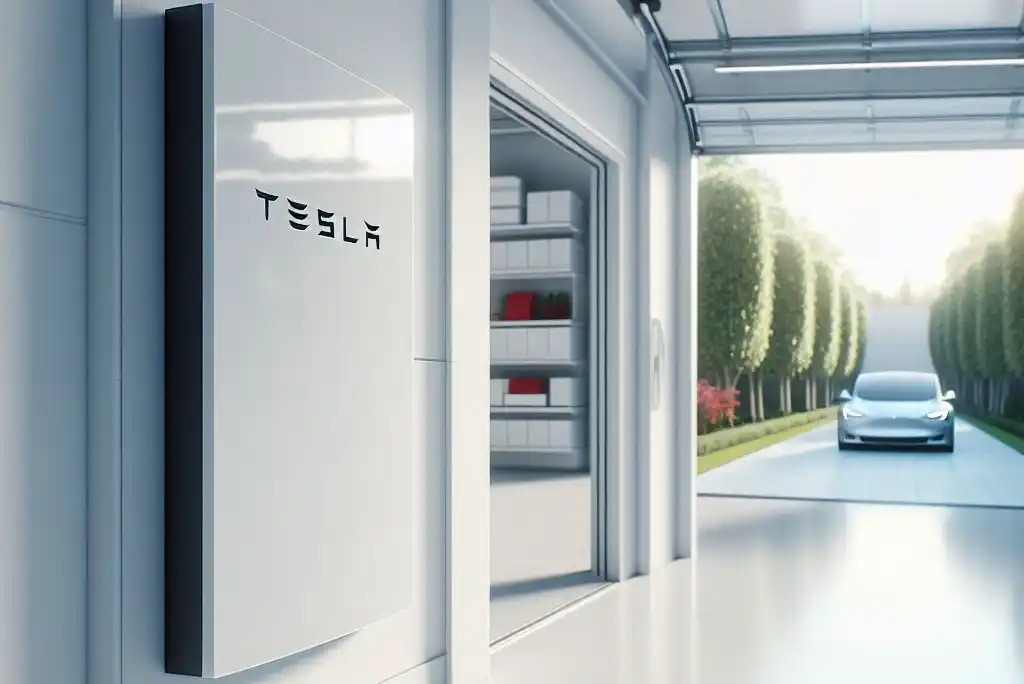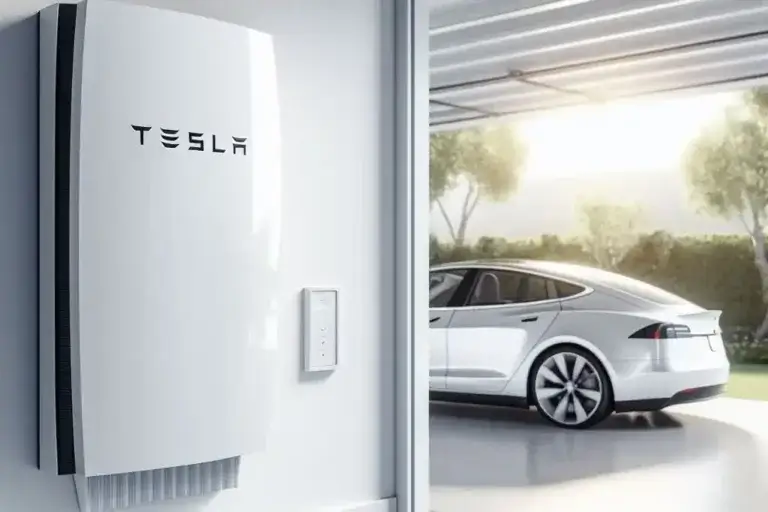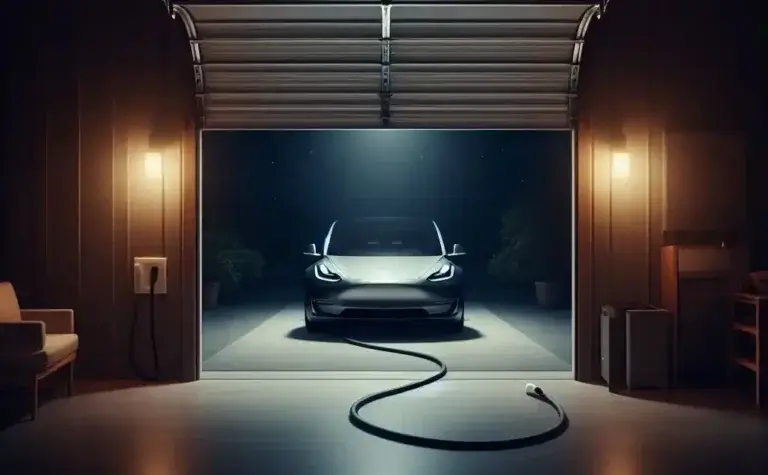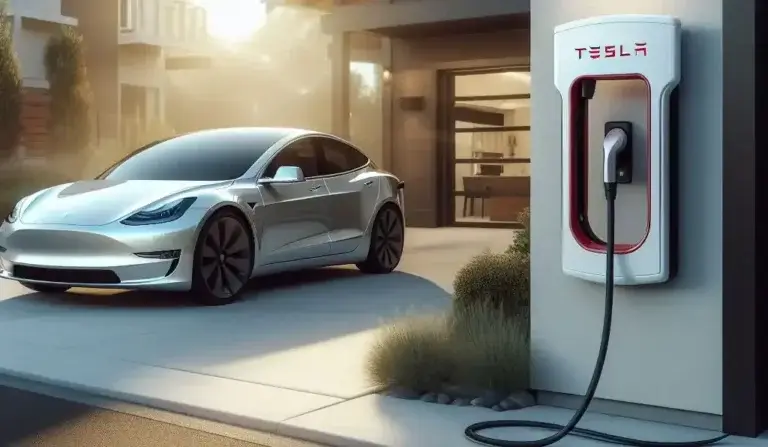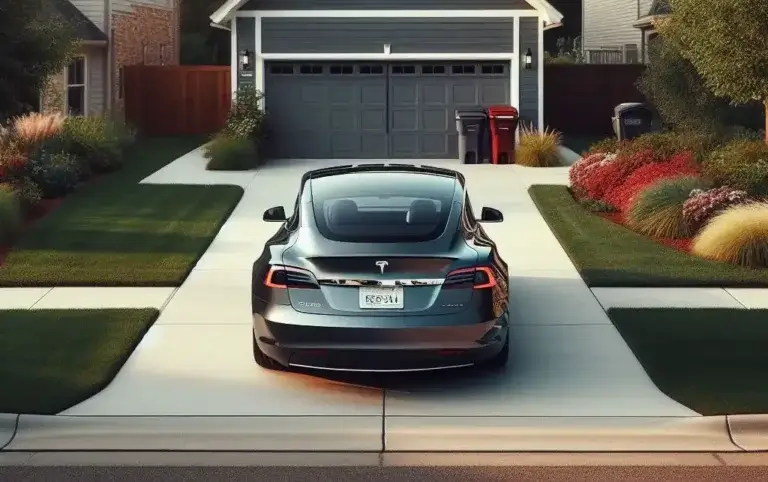How Long Does Tesla Powerwall Last? What You Need To Know About Tesla Powerwall Lifespan
Wondering how long the Tesla Powerwall home battery system will last? As more homeowners invest in the Powerwall to store solar energy and provide backup power, lifespan is an important consideration.
In this comprehensive guide, we’ll cover everything you need to know about how long does Tesla Powerwall lasts, including:
- How many cycles a Tesla Powerwall can handle
- The Powerwall’s expected lifespan under different use cases
- Tips to extend your powerwalls lifespan
- How long a Powerwall warranty lasts
- When you may need to replace your Tesla Powerwall
- And much more
By the end, you’ll understand exactly what to expect from your Powerwall system over time – plus have actionable tips on maximizing longevity. Let’s dive in!
An Introduction to the Tesla Powerwall Home Battery
Before getting into lifespan specifics, let’s quickly cover what the Tesla Powerwall is for some context…
The Tesla Powerwall is a rechargeable home battery system that can:
- Store solar energy – Solar panels produce energy even when the home doesn’t need it. The Powerwall stores this excess energy for nighttime or cloudy days. This approach maximizes solar panel ROI.
- Provide backup power – The Powerwall kicks in automatically during grid outages to power your home’s essentials. This brings peace of mind and keeps activities going when the power goes out.
- Supply continuous power – With solar panels charging the Powerwall each day, the system provides renewable energy to power your home 24/7.
Tesla offers the Powerwall 2 battery with 13.5 kWh of storage capacity. The weekly cycle version is optimized for solar self-consumption, while the backup-only option focuses solely on outage resilience.
Now let’s explore what to expect from your Powerwall over time…
How Many Cycles Can the Tesla Powerwall Handle?
When evaluating home battery lifespan, cycles are an important metric.
- A cycle refers to one full discharge and recharge of a battery.
- The more cycles a battery can handle, the longer it will last. This durability varies across battery chemistries.
Tesla utilizes premium lithium-ion battery cells in Powerwall systems. Each Powerwall battery is rated to handle approximately 5,000 to 10,000 cycles in its lifetime under normal usage conditions.
This cycle rating is for a full 100% discharge – from completely full to entirely empty – and back up to 100% with each cycle.
In reality, your Powerwall will likely experience smaller partial-depth cycles each day. This puts less strain on the battery, helping maximize longevity over more cycles.
What is the Lifespan of a Tesla Powerwall?
Now we know the Powerwall 2 can technically last for 5,000 to 10,000 charge cycles. But how long might this translate to in years of real-world performance?
The estimated Tesla Powerwall lifespan ranges from 10-15 years on average. However, actual longevity depends on several variables:
Powerwall Use Case Impacts Lifespan
How you use your home battery system affects lifespan. In basic terms:
- Solar self-consumption – Using your Powerwall daily to store solar energy will cycle the battery more often. But these are often shallow partial cycles that are low wear and tear. This use case can still achieve 10-15 years reliably.
- Outage backup only – Utilizing your system solely as an emergency backup during grid failures cycles the battery much less frequently. Deeper discharge cycles are harder on batteries. But with light cycling, a backup-only Powerwall may operate for 15+ years.
- Continuous solar power – Running high daily throughput to power your home around the clock puts the most strain on the Tesla battery. This use case – without moderation – often sees reduced lifespan of less than 10 years.
Powerwall Battery Health Management Is Key
The Tesla Powerwall runs advanced battery management software to optimize performance. This regulates temperature, prevents overcharging/deep discharging, balances cell voltage, and more. Proper battery management preserves lifespan significantly.
Without it, battery degradation happens faster. So let Tesla’s algorithms do their job!
Local Climate Impacts Performance
Hot climates are harder on lithium-ion batteries, shortening lifespan. Cooler regions enable batteries to run more efficiently.
Consider your local climate when estimating Powerwall longevity for your home. Warmer locations may see lifespans on the lower end of the 10-15 year average.
Installation Quality Matters
A solar equipment malfunction or poor quality installation can negatively impact Powerwall performance and longevity.
Choose Tesla’s certified installers when possible for reliable, factory-approved workmanship. Review agreements to ensure warranties and performance guarantees support longevity.
With smart solar design, quality equipment, and proper usage moderate cycling, your Tesla Powerwall system can realistically last 10-15+ years.
Now let’s look at steps to extend your battery’s lifespan even longer…
Tips to Extend Your Tesla Powerwall Lifespan
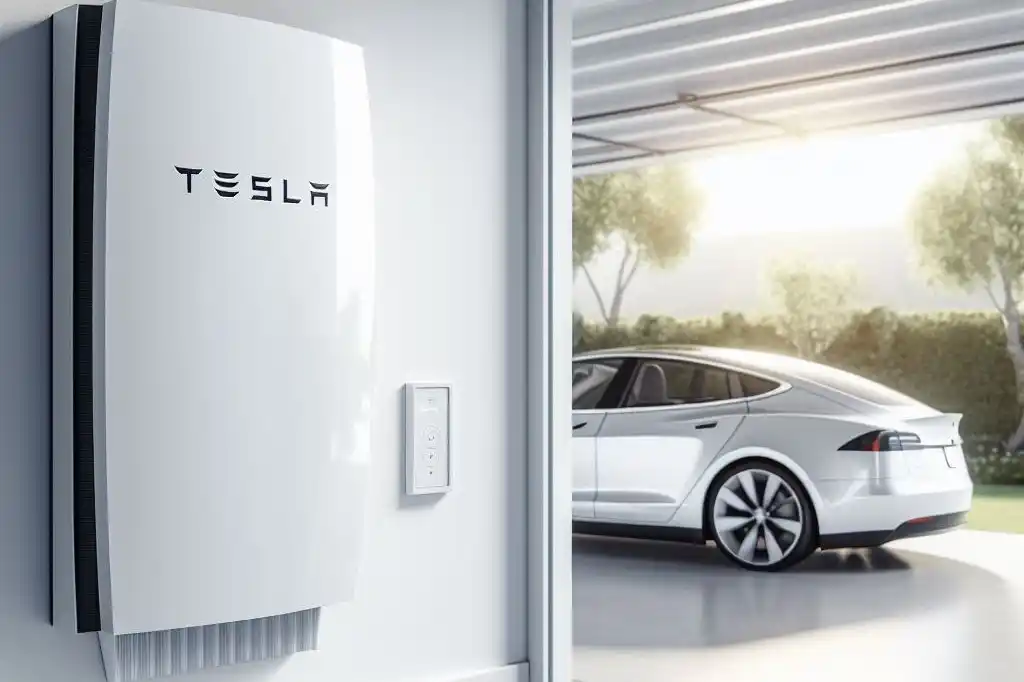
You’ve invested significantly in your Tesla Powerwall. So taking steps to maximize lifespan just makes sense.
Here are 5 tips to extend your home battery’s longevity by several years:
1. Moderate Solar Self-Consumption Cycling
Finding the Goldilocks zone for solar self-consumption throughput will optimize Powerwall longevity.
Cycling your battery too little misses out on solar energy. But cycling too aggressively adds unnecessary wear and tear over time.
Aim to find the sweet spot where your Powerwall cycles enough to maximize solar ROI – while still preserving batter life. Adjust settings periodically to balance performance & longevity.
2. Limit Depth of Discharge
Aim for consistent partial battery cycles over time rather than full, deep discharge cycles.
Set your Powerwall not discharge below 20% capacity. This reduces strain on cells and enables 2x+ more lifetime cycles before failure.
3. Regulate Ambient Temperature
The cooler the temperature, the better for your Powerwall’s lifespan. Just a few degrees difference helps significantly.
If storing your battery outdoors, look at insulation blankets to regulate temperature. Keep indoor Powerwall spaces well-ventilated and use efficient cooling as warranted.
4. Consider Adding a 2nd Powerwall
Pairing an additional Powerwall 2 provides redundancy and halves the electrical load each unit must handle. This lightens cycling strain across both batteries for better longevity.
For household with high energy usage, distributing demand across dual Powerwalls often optimizes performance & lifespan.
5. Clean Solar Panels Regularly
Dirty solar panels can’t recharge your Powerwall as efficiently. This strains the battery to overwork compensating for low input power.
Keep your solar array clean so it stays highly productive. Let your panels operate at peak output to take the brunt of electrical loads over time.
Following these tips will help keep your Powerwall running efficiently for years longer than average expectancy.
Next let’s look at what warranty coverage Tesla provides…
Does the Tesla Powerwall Come with a Warranty?
Investing in new energy technology comes with risk. Equipment can malfunction despite best efforts. That’s why warranties exist for peace of mind.
The Tesla Powerwall warranty includes:
- 10 year product warranty – Covers Powerwall system defects and failures needing full replacement.
- 10 year performance warranty – Guarantees at least 70% of 13.5 kWh capacity remains after 10 years.
Tesla’s warranties apply only when installed by one of their certified professionals.
For DIY installs or other unauthorized configurations, Tesla won’t honor warranty terms. So be sure to use approved Tesla Powerwall installers.
The 10 year coverage is on the shorter side – given expected 15 year lifespan – but offers reasonable protection on manufacturers defects.
When Will You Need To Replace the Tesla Powerwall?
The Tesla Powerwall 2 home battery realistically lasts 10-15 years on average before needing replacement.
Of course some units fail sooner from defects or accidents. While others exceed 15 years with light use and proper care.
Here are signs indicating your Powerwall is nearing replacement age:
- Losing storage capacity – Once your Tesla battery falls below 70% of original capacity under warranty terms, its ability to power your home drops considerably. Time for a new battery.
- Failing to hold charge – If your Powerwall can’t maintain adequate charge despite good solar input, this likely indicates degraded internal battery chemistry nearing failure.
- Internal system alerts – The Powerwall’s hardware monitors battery function. Error alerts like thermal runaway, voltage instability and more indicate replacement time.
- Frequent need for customer service – If service calls become common to reboot systems or troubleshoot errors impacting performance, issues likely run deeper needing full unit replacement.
Ideally budget for full Tesla Powerwall replacement every 12-15 years. With proper usage and care, target lifespan is achievable from these premium home energy storage systems.
Tesla Powerwall Lasts 10-15 Years on Average
In the end, the Tesla Powerwall 2 can reliably last 10-15 years for most homeowners before a replacement unit becomes necessary.
- With approximately 5,000-10,000 rated cycles, Powerwall batteries are built to endure years of moderate daily use.
- Smart battery management preserves longevity by regulating performance.
- Following best practices for setup, usage patterns and maintenance will max out a Powerwall’s functional lifespan.
No technology lasts forever. But investing in a quality Powerwall energy storage system, while applying care and common sense operation, provides exceptional and cost-effective performance over time.
Now you know realistically how long you can expect your Tesla Powerwall home battery to last. Hopefully this guide gave you helpful insights into lifespan considerations as you design the ideal solar and storage system for your household’s needs and budget.
Frequently Asked Questions About Tesla Powerwall Lifespan
You likely still have plenty of questions about the finer details of Tesla Powerwall lifespan and long-term performance.
Let’s review some frequently asked questions to cover additional topics:
How Many Tesla Powerwalls Do I Need?
With 13.5 kWh capacity, one Tesla Powerwall can provide 1-2 days backup power for essential home loads during an outage. It can also power lights, appliances, TVs, and electronics indefinitely in tandem with solar panels.
For full home backup or running high energy consumption households, multiple Powerwall batteries are recommended. This also extends overall system lifespan through redundancy.
Does Temperature Impact Tesla Powerwall Lifespan?
Yes, ambient temperature impacts lifespan considerably. Cooler battery operating temperature preserves chemical performance and longevity much better. Just a 10 degree difference makes a noticeable impact over years of runtime.
Outdoor Powerwall units benefit from insulation for temperature regulation. Indoor installations should ensure adequate airflow and ventilation to prevent overheating. Consider efficient cooling systems to manage heat in hot regions.
How to Determine If Your Tesla Powerwall Needs Replacing?
If your Powerwall 2 battery falls below 10 kWh capacity within 10 years, it no longer meets Tesla’s warranty performance guarantee minimum indicating replacement time.
You can also monitor system alerts for battery failure or thermal throttling notices. And contact Tesla service about troubleshooting error messages impacting performance.
Can You Repair a Tesla Powerwall?
No, Tesla does not support any customer repairs or replacing internal Powerwall parts. The system is a sealed integrated unit. Once it fails, the entire battery must be swapped out.
Tesla handles replacements by providing a refurbished Powerwall unit and safely recycling old packs. There is core trade-in credit and discounts for existing customers buying new systems.
What Factors Increase Lifespan of Tesla Powerwall Batteries?
Several best practices maximize your Powerwall’s longevity:
- Quality installation & setup
- Smart solar design & pairing
- Battery temperature regulation
- Preventing full discharges/overcharges
- Regular maintenance & cleaning
- Light-to-moderate cycling demands
- Operating multiple Powerwall units
- Following Tesla guidance on usage
Carefully managing these factors keeps your system running efficiently for over a decade on average.
How Long Does 13.5 kwh Last

The Tesla Powerwall 13.5 kWh is a home battery backup system that can power your home for up to 24 hours during a power outage. It has a usable energy capacity of 13.5 kWh, which means that it can store enough energy to power your essential appliances, such as your refrigerator, lights, and sump pump, for an entire day.
The exact amount of time that a Tesla Powerwall 13.5 kWh will last depends on your energy usage. If you are using only a few essential appliances, the battery can last for up to 24 hours. However, if you are using more appliances, such as a television or air conditioner, the battery will last for a shorter period of time.
Here is a table of estimated run times for the Tesla Powerwall 13.5 kWh:
| Appliance | Estimated Run Time |
|---|---|
| Refrigerator | 24 hours |
| Lights | 48 hours |
| Sump pump | 48 hours |
| Television | 4 hours |
| Air conditioner | 3 hours |
As you can see, the Tesla Powerwall 13.5 kWh can provide a significant amount of backup power during a power outage. However, it is important to note that these are just estimates, and your actual run time may vary depending on your specific usage.
How Long Will Powerwall Last in an Outage
The length of time a Tesla Powerwall will last during an outage depends on a number of factors, including the size of your home, the number of appliances you are using, and the efficiency of your appliances. However, as a general rule of thumb, a single Tesla Powerwall can power your home for up to 24 hours during an outage. This is because the Tesla Powerwall has a usable energy capacity of 13.5 kWh, which is enough to power essential appliances such as your refrigerator, lights, and sump pump for an entire day.
Of course, if you are using more appliances than just the essentials, your Tesla Powerwall will not last as long. For example, if you are running an air conditioner or a television, your Tesla Powerwall may only last for a few hours.
Here is a table that shows the estimated run times for a Tesla Powerwall during an outage, based on the number of appliances being used:
| Number of Appliances | Estimated Run Time |
|---|---|
| 1-2 | 24 hours |
| 3-4 | 12 hours |
| 5-6 | 6 hours |
| 7-8 | 3 hours |
As you can see, the more appliances you are using, the shorter your Tesla Powerwall will last. This is because appliances draw power from the battery, and the more appliances you are using, the faster the battery will drain.
Conclusion: Tesla Powerwall Lifespan Outlook
In closing, lifespan is a key consideration for the Tesla Powerwall 2 or any home energy storage system. While no technology lasts indefinitely, Tesla’s premium lithium-ion batteries can realistically operate over 10-15 years following solar best practices for usage and maintenance.
Now understanding Powerwall 2 durability and longevity metrics, you can make the most informed solar and energy storage decisions for your home. Consider investing in backup generators or adding extra Powerwall capacity as batteries age over time.
We hope this guide gave you immense clarity into the lifespan of the Tesla Powerwall and what to expect for performance longevity!

